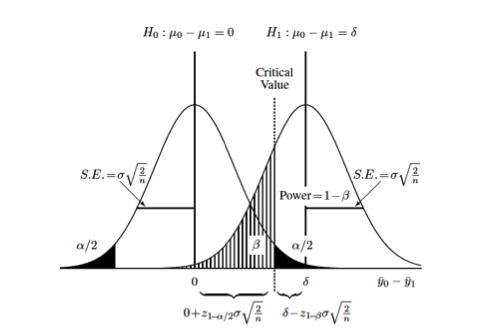
Binomial Distribution Sample Size Calculator. Heres a comprehensive example that describes how a binomial distribution calculator works which can be helpful for determining the binomial distribution manually if required. Variable follow-up with a minimum fu and a maximum fu and drop-out. Let X be the number of successes in a random sample of size 100 with model X Binomial100p. This will calculate the sample size for the negative binomial distribution for the 2-sample case under different follow-up scenarios.

If the sampling is carried out without replacement they no longer independent and the result is a hypergeometric distribution although the binomial. Note that this sample size calculation uses the Normal approximation to the Binomial distribution. The binomial probability distribution can be used to model the number of events in a sample of size n drawn with replacement from a population of size N eg. BINOM_SIZEp0 p1 1β tails α the sample size of a one-sample binomial test required to achieve power of 1β default 8 when p0 probability of success on a single trial based on the null hypothesis p1 expected probability of success on a single trial tails of tails. P 0 is the comparison value. C is the test confidence level.
P 03 versus H A.
Fixed follow-up with drop-out 3. N is sample size. Heres a comprehensive example that describes how a binomial distribution calculator works which can be helpful for determining the binomial distribution manually if required. There are two possible outcomes. The sample size for each sample separately is. This calculator uses the following formulas to compute sample size and power respectively.